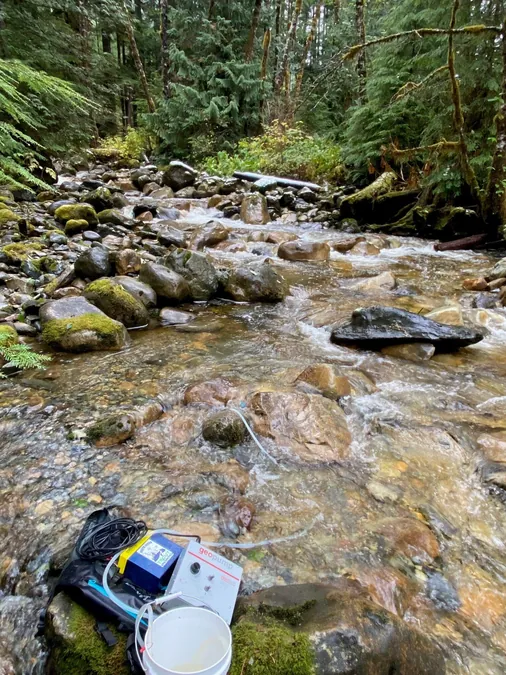
Unveiling the Mystery: How Does the International Space Station Orbit Earth Without Burning Up?
2024-12-16
Author: Olivia
Introduction
Have you ever wondered how the International Space Station (ISS) manages to zip around our planet without turning into a fiery ball of debris? It's a fascinating topic that captures the imagination of many, from budding scientists to seasoned space enthusiasts. Here’s an exploration into how this colossal structure stays safe and functional high above us.
The Science Behind Meteoroids Burning Up
To understand why the ISS remains unscathed, let's first discuss why meteoroids burn up when they enter Earth's atmosphere. Meteoroids are small celestial bodies that can travel between 7 to 25 miles per second (12 to 40 km/s). When their paths intersect with Earth, they plunge through the atmosphere, which consists mainly of nitrogen and oxygen.
As these meteoroids enter the mesosphere—located about 30 to 50 miles (48 to 80 kilometers) above Earth—they experience intense friction. The air pressure and temperatures soar as they collide with these atmospheric particles, causing rapid heating and structural disintegration. This process is what gives rise to the spectacular display we know as "shooting stars."
The ISS’s Safe Haven: The Thermosphere
Now, why does the ISS escape this fiery fate? The station orbits in a much higher and less dense region of the atmosphere known as the thermosphere, situated between 50 and 440 miles (80 to 708 km) above Earth's surface. At approximately 250 miles (402 km) high, the ISS floats well above the most turbulent layers of our atmosphere.
Here, the particle density is so low that to gather enough air particles to equal the mass of just one apple, you would need a container the size of Lake Superior! Without sufficient particles to create the friction and heat that meteoroids experience, the ISS remains safe from burning up.
Temperature Extremes: The Challenge of Space
However, just because the ISS doesn't burn up doesn't mean it’s free from challenges. The space station experiences extreme temperature fluctuations, swinging between 250 degrees Fahrenheit (121 degrees Celsius) in direct sunlight and plummeting to as low as -250 degrees Fahrenheit (-156 degrees Celsius) in darkness. This staggering difference of 500 degrees Fahrenheit (277 degrees Celsius) demands that engineers select materials capable of withstanding such extremes.
Inside the ISS, life is much more comfortable for astronauts, with temperature control systems that keep the atmosphere suitable for human habitation, much like heating and cooling systems in our homes.
Contributing to Science and Beyond
The ISS has revolutionized our understanding of various scientific disciplines. From developing advanced water filtration systems and pioneering methods to grow food in space to gaining insights into the mysterious nature of black holes, this unique work environment continues to yield transformative results.
It's worth noting that NASA plans to keep the ISS operational until 2030. After that, it will undergo a controlled deorbiting, entering the mesosphere and facing the same intense heat that meteoroids do. Unlike spacecraft designed for reentry, like crew capsules equipped with heat shields, the ISS wasn't built for this kind of descent and will not survive the process.
A NASA Spectacle
Curious about when you can spot the ISS zipping across your night sky? NASA provides tracking information on its website, helping space enthusiasts around the world witness this incredible feat of engineering and human ingenuity.
Conclusion
In conclusion, the International Space Station serves as a remarkable symbol of scientific discovery, orbiting our planet unharmed due to the unique qualities of its high-altitude environment. As we continue to explore space and push the boundaries of science, the ISS will undoubtedly remain a pivotal component of our journey through the cosmos. So, keep looking up—amazing things are happening above us!









 Brasil (PT)
Brasil (PT)
 Canada (EN)
Canada (EN)
 Chile (ES)
Chile (ES)
 España (ES)
España (ES)
 France (FR)
France (FR)
 Hong Kong (EN)
Hong Kong (EN)
 Italia (IT)
Italia (IT)
 日本 (JA)
日本 (JA)
 Magyarország (HU)
Magyarország (HU)
 Norge (NO)
Norge (NO)
 Polska (PL)
Polska (PL)
 Schweiz (DE)
Schweiz (DE)
 Singapore (EN)
Singapore (EN)
 Sverige (SV)
Sverige (SV)
 Suomi (FI)
Suomi (FI)
 Türkiye (TR)
Türkiye (TR)